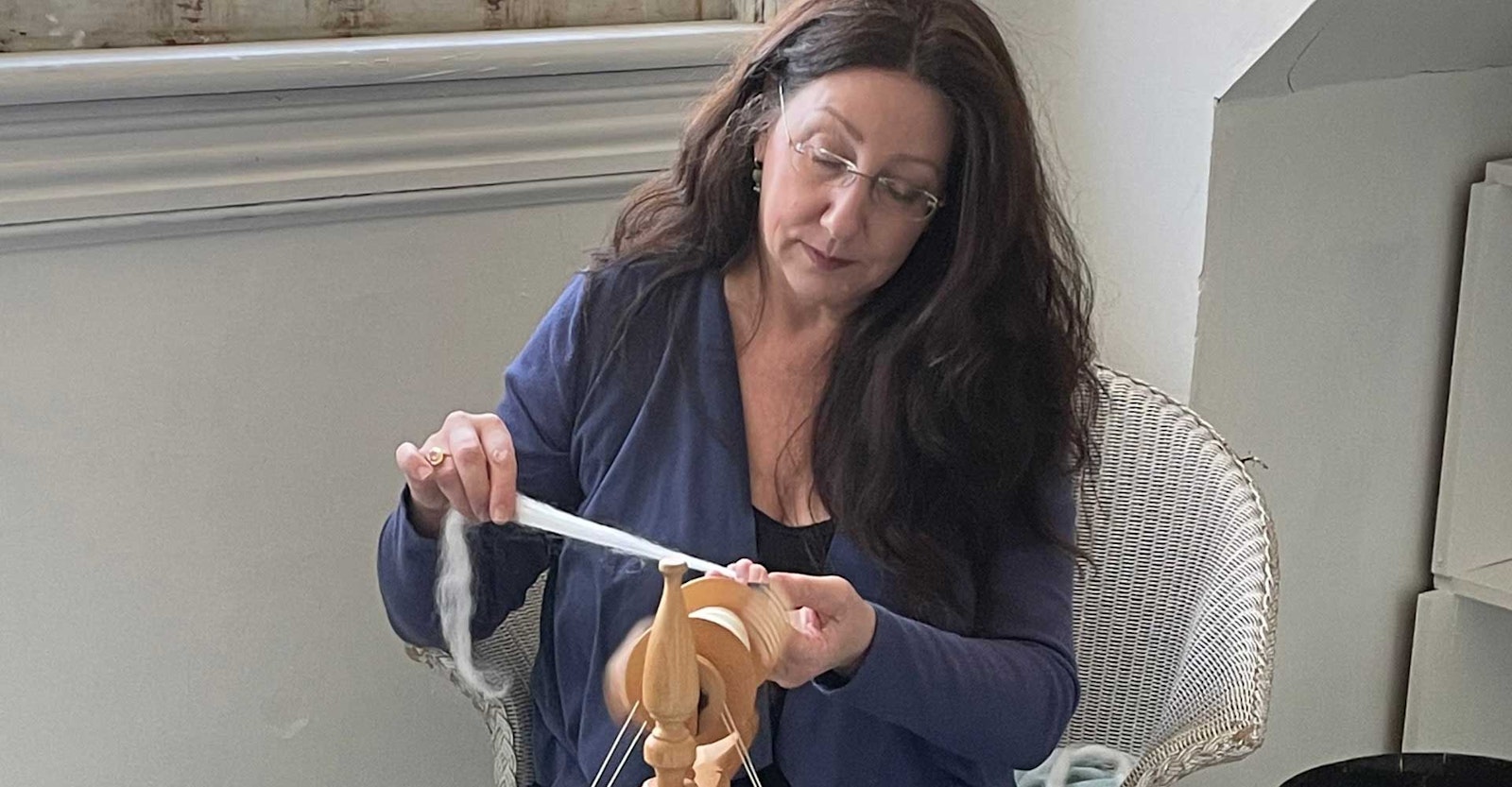Tell us about your day job.
Therapeutic hypnosis helps people break through blocks and change unwanted patterns and behaviors by tapping into the power of the subconscious mind. I’m particularly interested in how repetitive hand motions can reduce anxiety and help ease symptoms of post-traumatic stress disorder. All spinners, and makers of most things, naturally understand the trance or flow state that is utilized in both hypnosis and spinning. I am developing some workshops and programs that incorporate both to help people overcome pandemic-related fears, phobias, and anxieties.
How did you become a spinner?
I learned to spin in fourth grade when my dad, a silversmith, worked at a Colonial village. I became fascinated with weaving, earned a degree in textile/surface design from the Fashion Institute of Technology in New York, and have had several different careers in the fashion and interiors industries. Weaving became my passion, and I basically stopped spinning.
During the pandemic, I found myself needing a calming outlet for my tensions and anxieties and started spinning again. My first skeins were quite overtwisted, which I decided to observe and accept, rather than judge or fix. This led to a se ries of photographs of that wool yarn with one of my art pieces Suspended Time, which is a stopped pocket watch embedded in cement. Somehow the interaction between those subjects seemed harmonious.

Time Wrap, handspun wool with Suspended Time. Artwork and photo by Kate Rogovin
Do your job and your fiber/spinning hobbies ever overlap?
There are many overlapping features between hypnosis and spinning. They both rely on the ability to relinquish and the ability to hold. Balanced tension is a goal for each process. Without tension, everything falls apart. And with too much tension, there is no flow.
How does spinning fit into the rest of your life?
I use spinning as an emotion processor. Sometimes, I spin when peaceful and calm. Other times, I spin when bored, frustrated, or angry. The year 2020 was a real challenge, and spinning helped me accept and move through and process my various emotional states. It is always soothing and calming. I like to spin at night before bed as it helps me slip into the subconscious dream world.
What is your favorite thing about spinning?
I love the rhythm and sound of spinning, as well as the softness of the fibers in my hands. Seeing my bobbin fill up gives me a sense of immediate accomplishment. I am also more connected to my memories, and my ideas seem to be more fluid when I spin.
Read about more spinners who hold down interesting jobs on our website here!

